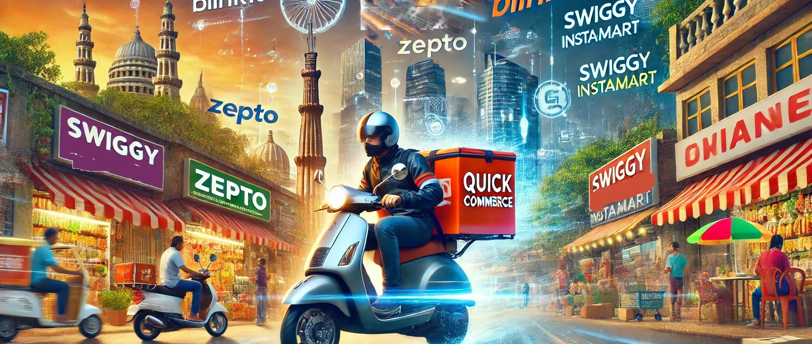Amazon, Flipkart, and Bigbasket: Slow to Pivot?
Despite their vast resources and market dominance, Amazon and Flipkart initially focused on traditional e-commerce models, prioritizing wide product ranges and centralized fulfillment centers over speed.
Bigbasket, while a pioneer in grocery delivery, stuck to a planned delivery approach (often same-day or next-day), which didn’t resonate with the growing consumer preference for instant gratification.
Amazon Fresh and Flipkart Quick were later entrants into the quick commerce space, indicating that these giants may have underestimated the growth trajectory of ultra-fast deliveries.
Did They See It Coming?
Underestimating Consumer Behavior: Consumer habits in India shifted dramatically post-pandemic, with urban customers valuing convenience over cost. Traditional e-commerce players focused on planned and bulk purchases, missing the small-basket, high-frequency transactions model that Zepto excelled in.
Focus on Core Operations: Companies like Amazon and Flipkart prioritized scaling their broader e-commerce ecosystems, which include electronics, fashion, and other non-perishable goods. Quick commerce requires a hyperlocal logistics network, which differs from their centralized delivery model.
Late Market Response: By the time Amazon and Flipkart entered the quick commerce space, players like Zepto had already established dominance with optimized operations and strong brand recognition.
Key Trends Driving Quick Commerce
Urbanization: With rising urban density, hyperlocal delivery became feasible and profitable.
Consumer Expectations: Post-pandemic, there was a surge in demand for contactless, instant deliveries.
Technology: Advances in AI, real-time inventory management, and predictive analytics enabled companies like Zepto to operate efficiently.
What Can Amazon, Flipkart, and Bigbasket Learn?
Invest in Hyperlocal Models: The success of Zepto shows the importance of micro-warehousing and hyperlocal logistics for meeting consumer expectations in quick commerce.
Focus on Consumer Experience: Speed and reliability are now critical differentiators. Businesses need to offer shorter delivery times without compromising on product quality.
Target New Demographics: Millennials and Gen Z, who prioritize convenience, represent a significant portion of quick commerce consumers.
Leverage Data: Using data-driven insights to predict consumer needs can enable personalized and faster service.
Conclusion: Ignored or Underestimated?
It is evident that Amazon, Flipkart, and Bigbasket neither entirely ignored Zepto nor failed to see its potential; rather, they underestimated the speed of adoption and market shift toward quick commerce. While these e-commerce giants still hold a dominant position in traditional retail, their slower response to this emerging trend gave Zepto and its peers the first-mover advantage.
As Indian consumers increasingly shift from traditional e-commerce to quick commerce for everyday needs, the ability to adapt quickly to evolving market dynamics will determine the winners in this space. Companies that embrace agility and innovation will secure their future in an increasingly competitive landscape.


